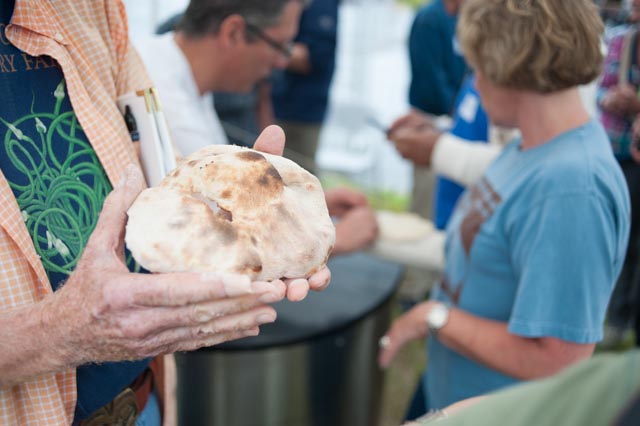
I recently met Sophie the lead miller, grain tester and bread baker for La Milanaise at a restaurant in Montreal. This impassioned young woman approaches milling organic grains like none other. In her test kitchen, she studies the properties of grains from the field to the oven. In a buzzing hot-spot in downtown Montreal, over small pates of house-cured meats and good French wine, she explained to me how she brings her bread to restaurants rather than eat theirs. It becomes a show-and-tell to the waiters and chefs how heritage grains react to moisture and the benefits to longer fermentation, making huge improvements to texture and flavor.
We spoke a little about her experience with gluten-free. Even though chickpea flour makes beautiful dough, Sophie believes the gluten-free trend is coming to an end and focus is now on ancient grains.
Some of these first cultivated crops have natural gluten levels and the uncanny ability to adapt to all types of growing conditions. She explains the plant naturally wants to survive, even thrive. She explains few of the heritage wheats can be planted both in spring and winter. It just adapts. Where the crossbred grains tend to show instabilities after seven years, which is not good for farmers who are trying to establish their crop. (Huge benefits here!)
As vital as gluten is for many bakers it still can be a source of extreme discomfort for individuals with celiac disease and should not be taken lightly. For them it certainly is not a trend but an un-welcomed medical condition and can be a difficult way of life. A life limited by their food choices and a blind trust that something labeled gluten-free, is exactly what it says.
Growing and eating more ancient grains is the final cog in the wheel to raising awareness of the good sustainable food movements. By now most of us understand the impact of poor animal husbandry, unappetizing caged chickens and feedlot cattle. It’s also clear to imagine the negative effect of fruits and vegetables sprayed with pesticides and herbicides effecting the natural habitat of bees, insects and contamination of ground water. What’s harder to see is is how modern wheat is bred to fit into the form of large scale farming. Ancient and heritage grains can offer everything this wheat cannot.
With heritage grains and a dedicated miller, the artisan baker is most happy. When we get our weekly flour delivery a wonderful mixture of smells of toasted grass and warm earth floats through the kitchen. At the market, my eyes light up when someone asks me about our cloth bags filled with Red Fife wheat. I’ll hold up the bag and say, “Here, smell!”

















